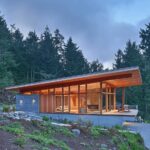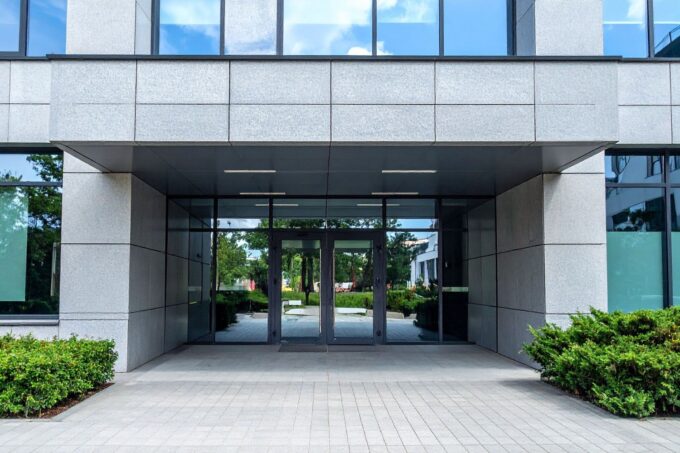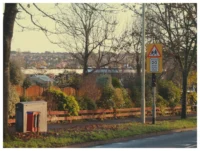- Home
- Articles
- Architectural Portfolio
- Architectral Presentation
- Inspirational Stories
- Architecture News
- Visualization
- BIM Industry
- Facade Design
- Parametric Design
- Career
- Landscape Architecture
- Construction
- Artificial Intelligence
- Sketching
- Design Softwares
- Diagrams
- Writing
- Architectural Tips
- Sustainability
- Courses
- Concept
- Technology
- History & Heritage
- Future of Architecture
- Guides & How-To
- Art & Culture
- Projects
- Interior Design
- Competitions
- Jobs
- Store
- Tools
- More
- Home
- Articles
- Architectural Portfolio
- Architectral Presentation
- Inspirational Stories
- Architecture News
- Visualization
- BIM Industry
- Facade Design
- Parametric Design
- Career
- Landscape Architecture
- Construction
- Artificial Intelligence
- Sketching
- Design Softwares
- Diagrams
- Writing
- Architectural Tips
- Sustainability
- Courses
- Concept
- Technology
- History & Heritage
- Future of Architecture
- Guides & How-To
- Art & Culture
- Projects
- Interior Design
- Competitions
- Jobs
- Store
- Tools
- More
Top 10 Inspiring Architectural Public Spaces Around the World to Visit
Discover the top 10 inspiring architectural public spaces around the world that redefine community, sustainability, and design. From urban hubs like the High Line to cultural landmarks like Gardens by the Bay, explore how these innovative spaces foster connection, inclusivity, and storytelling while enhancing environmental and cultural identity.

Public spaces have the power to bring communities together, spark creativity, and transform the way we experience our surroundings. Across the globe, architects and designers have reimagined these spaces, blending functionality with breathtaking design to create places that inspire and connect us. These architectural marvels aren’t just structures—they’re experiences.
From bustling urban plazas to serene cultural landmarks, the world is filled with public spaces that leave a lasting impression. They tell stories of innovation, culture, and human connection, reminding us of the beauty in shared environments. Let’s explore some of the most inspiring architectural public spaces that continue to captivate and unite people from all walks of life.

Table of Contents
ToggleThe Importance Of Architectural Public Spaces
Architectural public spaces play a pivotal role in shaping societal interactions. They promote inclusivity by providing areas where individuals from varying backgrounds can converge. Parks, squares, and promenades showcase human diversity through their design and usage.
These spaces support social cohesion by fostering shared experiences. Events, festivals, and performances in well-designed public spaces encourage community engagement. They become hubs where social bonds strengthen over time.
Urban public spaces stimulate economic activities. Markets and pedestrian-friendly zones attract visitors, driving local businesses and tourism. Their design impacts pedestrian flow, enhancing usability while supporting commercial growth.
Architectural innovation in public spaces enhances cultural identity. Iconic landmarks like museums and memorials often reflect their community’s heritage. They preserve history and stimulate collective memory through thoughtful design.
Environmental benefits arise from well-planned public spaces. Green landscapes improve air quality, regulate urban temperatures, and offer habitats for biodiversity. Sustainable designs minimize ecological footprints while maximizing functionality.
Criteria For Selection
We evaluated public spaces based on their ability to inspire, connect communities, and leave a lasting impact. These spaces represent a balance of functionality, creativity, and purpose.
Design And Aesthetic Appeal
We focused on spaces with striking architectural elements that blend form and function seamlessly. Designs that incorporate local materials, artistic features, or unique geometries were prioritized. For example, plazas with intricate patterns or sculptures that engage visitors visually.
Cultural And Social Impact
Public spaces were selected for their role in fostering inclusivity and reflecting cultural identities. Spaces hosting community events, festivals, or performances stood out for enhancing social cohesion. Iconic landmarks that honor heritage or collective memory were also considered.
Innovation And Sustainability
We highlighted spaces using cutting-edge techniques while maintaining environmental consciousness. Examples include solar-powered lighting, green roofs, or rainwater harvesting systems. Projects that improve biodiversity or use recyclable materials were key factors in our selection.

Top 10 Inspiring Architectural Public Spaces Around The World
Public spaces can redefine how communities engage with their surroundings, creating landmarks that balance architecture and inclusivity. Below, we’ve highlighted ten iconic spaces that inspire connection, creativity, and cultural appreciation.
1. The Eiffel Tower Plaza, Paris, France
The plaza surrounding the Eiffel Tower combines grandeur with accessibility. Redesigned in 2019, it includes pedestrian-friendly green spaces and seating areas. Blending classic design and modern functionality, it offers a setting for events, relaxation, and unobstructed views of the iconic monument.
2. The High Line, New York City, USA
This elevated park, built on a former railway line, spans 1.45 miles along Manhattan’s West Side. It’s known for innovative landscaping, public art installations, and eco-conscious design. The adaptive reuse of the space fosters urban biodiversity and offers residents and visitors a tranquil retreat.
3. Gardens By The Bay, Singapore
Spanning 250 acres, this horticultural wonder features futuristic Supertrees, climate-controlled conservatories, and diverse flora. Designed with sustainability in mind, its solar panels and water systems reduce environmental impact while elevating architectural and ecological innovation.

4. The Great Court At The British Museum, London, UK
Constructed beneath a spectacular glass roof, this 2-acre courtyard merges modernity with classical architecture. It serves as a communal area for visitors, housing exhibitions and providing natural light while preserving the museum’s historic integrity.
5. Millennium Park, Chicago, USA
At 24.5 acres, Millennium Park integrates cultural programming, public art, and green spaces. It’s home to landmarks like Cloud Gate and the Jay Pritzker Pavilion. Designed for social interaction, it hosts concerts, festivals, and recreational activities within Chicago’s urban core.
6. The Sydney Opera House Promenade, Sydney, Australia
This waterfront space complements the Opera House with open plazas, seating, and walkways facing Sydney Harbor. Balancing function and aesthetics, it supports performances, leisure activities, and panoramic views, enhancing its global cultural significance.
7. The Guggenheim Museum Plaza, Bilbao, Spain
The plaza’s reflective pool, sculptures, and modern landscaping amplify the Guggenheim’s avant-garde architecture. Visitors explore public art such as Jeff Koons’ Puppy and Louise Bourgeois’ Maman while experiencing community-focused design.
8. The Bund Waterfront, Shanghai, China
The Bund showcases a blend of modern skyscrapers and colonial-era buildings along the Huangpu River. Its elevated walkway includes gardens, viewpoints, and cultural spaces, making it a vital hub for tourism and local engagement.

9. Federation Square, Melbourne, Australia
This cultural precinct features diverse architecture, open plazas, and event spaces. Its bold, fractal design integrates art galleries, dining, and performance areas, reflecting Melbourne’s dynamic cultural identity.
10. The Royal Alcázar Gardens, Seville, Spain
Dating back to the Islamic period, these gardens blend historic and architectural elements. Paths surrounded by fountains, orange trees, and elaborate tilework create serene spaces, linking local heritage with horticultural artistry.
Key Takeaways From These Spaces
- Community Engagement
These architectural public spaces strengthen community bonds. They provide inclusive environments for diverse groups to connect through shared activities like festivals, performances, and casual gatherings.
- Cultural Representation
Public spaces like Gardens by the Bay and Millennium Park incorporate local traditions and artistic elements. This connection to cultural identity fosters pride and collective memory among residents and visitors.
- Economic Stimulation
Iconic locations, such as the Eiffel Tower Plaza and the High Line, support local economies. Their appeal attracts tourists, increases foot traffic, and boosts surrounding businesses.
- Sustainability in Design
Spaces like Gardens by the Bay demonstrate eco-conscious innovations. Features like solar-powered systems and integrated greenery mitigate environmental impacts while enhancing urban biodiversity.

- Multifunctional Appeal
These spaces prioritize functionality alongside creativity. For instance, the High Line transforms an urban structure into a leisure and cultural hub, balancing aesthetics and practicality.
- Accessibility and Inclusivity
Designs ensure accessibility for all, from wide promenades to adequate seating. This inclusivity invites participation from individuals with varied needs and abilities.
- Urban Transformation
Architectural spaces revitalize neglected or underutilized areas. By reimagining these sites, designers improve urban landscapes and create focal points for community life.
- Art and Innovation Integration
Artistic expressions are woven seamlessly into these spaces. Examples like Millennium Park’s Cloud Gate redefine how art is experienced in public domains.
- Historical Preservation
Some spaces preserve historical relevance within modern design. They offer a platform to honor heritage while accommodating contemporary expectations.
- Inspiration Beyond Aesthetics
Beyond visual appeal, these spaces inspire by promoting interaction, sustainability, and cultural exchange, leaving lasting impressions on all who visit.
Conclusion
Architectural public spaces are transformative environments that connect communities, foster inclusivity, and merge design with functionality. By incorporating local culture, sustainability, and innovative design, these spaces redefine how we engage with our surroundings. From urban hubs like the High Line to culturally rich sites like Gardens by the Bay, public spaces demonstrate the power of architectural storytelling. Their ability to inspire social, economic, and environmental progress ensures they remain integral to our collective experiences and cultural identity.
- Architectural travel guide
- architectural wonders to visit
- architecture around the world
- best public space designs
- explore architectural marvels
- famous architectural sites
- famous architecture to visit
- famous public buildings
- global architectural attractions
- iconic public spaces
- inspirational architecture
- inspiring architecture travel
- international architecture travel
- must-visit architecture
- notable architecture worldwide
- popular architecture sites
- Public architectural spaces
- top architectural landmarks
- top architecture destinations
- tourist architectural sites
- world-renowned architecture
- world's best public spaces
- world's top public spaces
Submit your architectural projects
Follow these steps for submission your project. Submission FormLatest Posts
Enhancing Urban Life: Best Practices for the Design of Walkways in Urban Areas
Discover the transformative role of urban walkway design in creating safer, sustainable,...
Playgrounds: Landscape Architecture for Inviting Interaction
Playgrounds in landscape architecture are more than spaces for activity—they are environments...
Future Trends in Urban Development: Embracing Sustainability and Smart Technology
Explore the future of urban development in this insightful article that highlights...
Understanding Having an Architectural Perception in Public Spaces for Better Community Engagement
Explore the transformative power of architectural perception in public spaces. This article...












Leave a comment